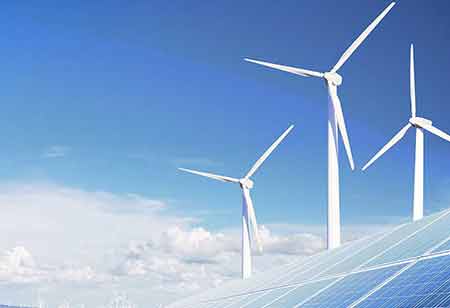Thank you for Subscribing to Energy Business Review Weekly Brief
The Contribution of Renewables to the Asian Energy Arena

By
Energy Business Review | Friday, July 01, 2022
Stay ahead of the industry with exclusive feature stories on the top companies, expert insights and the latest news delivered straight to your inbox. Subscribe today.
the Asia Pacific accounts for a whopping 60 per cent of the global population and has the world’s fastest rising regional energy demand.
FREMONT, CA: The majority of APAC nations are dependent on fossil fuels but eager to switch to clean renewable sources. In reality, Asia Pacific has recently outperformed Europe and the United States in the use of renewable energy, partly as a result of the rapid expansion of projects in China, India, and Australia. But according to the UN research, only 6.8 per cent of the region's total energy consumption last year came from modern renewables like wind and solar. Primarily, fossil fuels served as the source. In this multicultural region, securing clean, affordable, and sustainable energy is crucial for supporting social and economic development. And while certain APAC nations have invested in and installed clean energy more slowly than others, the region is poised to take the lead in the deployment of renewables over the next ten years, constructing over 500 GW of non-hydro capacity.
According to the Clean Energy Council, 700 MW of renewable energy projects were finished and put into service in Australia in 2017. The activity of large-scale wind and solar project activities increased investment in Australia by 150 per cent that year, reaching a record USD nine billion. The administration is on track to surpass its 2020 objective of obtaining 23.5 per cent of the nation's electricity from renewable sources. An increase in renewable energy, however, has made it difficult to balance the grid as coal-fired power plants have closed, notably in southern Australia. To handle the erratic nature of wind and solar energy, the state administration has turned to battery storage. According to a UN Economic and Social Commission for Asia and the Pacific report, 420 million people in APAC still do not have access to electricity. According to the report, the region needs to invest USD 298 billion annually to reach the UN Sustainable Energy for ALL target of doubling the share of renewable energy by 2030, yet present investment levels are insufficient.
Inadequate grid infrastructure and unhelpful policies and regulations have made it difficult for developing countries in the Asia Pacific region to increase their use of renewable energy. Furthermore, the significant expense of constructing and maintaining infrastructure in remote locations is sometimes not covered by government finances.
Check Out This : Manage CFO
As renewable energy grows in the Asia Pacific region, fossil fuels, which are still the leading energy source, will lose capacity share. Renewable energy continues to be considered a key growth sector in the future globally and important economies of Asia-Pacific, with 64 per cent of respondents having a favourable outlook. According to ESCAP, Australia, China, India, Indonesia, Japan, and the Republic of Korea will be the primary leaders in the region. As per BMI Research, China and India will be the main drivers, putting in 430 MW of additional wind and solar energy until 2027. It also predicts that India will grow installed capacity by 165 per cent over the next ten years, or roughly 164 GW, of non-hydro capacity. Japan is also utilising wind and solar energy as part of its transition away from nuclear power. To encourage its expansion, the government is establishing a new renewable certificate trading market in 2018. The fact that Indonesia is likewise becoming a regional leader may be the most unexpected. By 2025, it hopes to increase the proportion of renewable energy sources in the energy mix from the present 12 per cent to 23 per cent. The price for renewable electricity projects has been capped at 85 per cent of the average electricity cost in that area, and the government has made it simpler to get power purchasing agreements.
The prospect for renewable energy in APAC is incredibly promising overall. Renewable energy sources will continue to take share from incumbent fossil fuels in the region's energy mix as long as stronger government policy, strategies, and coordination work to promote a safer investment environment.






